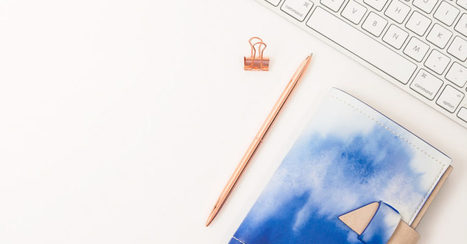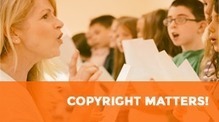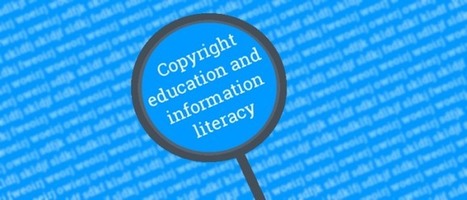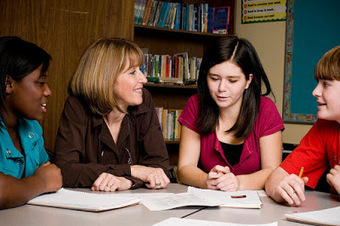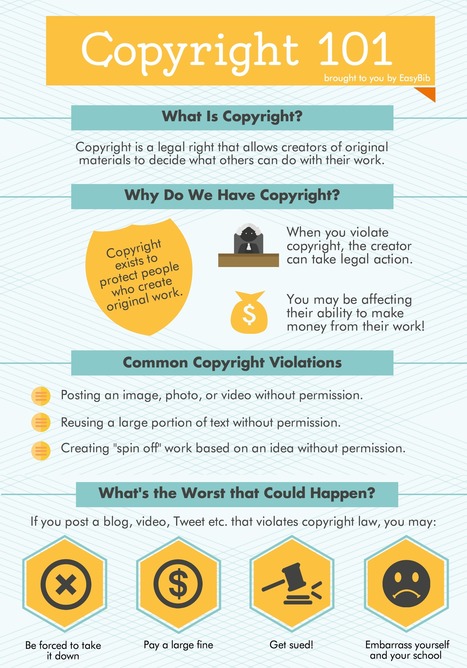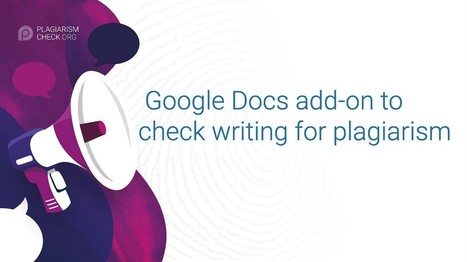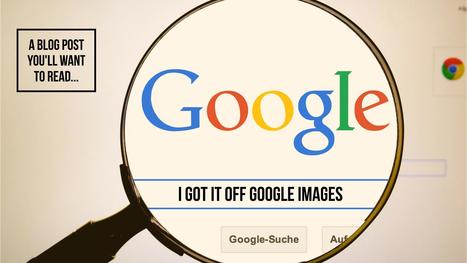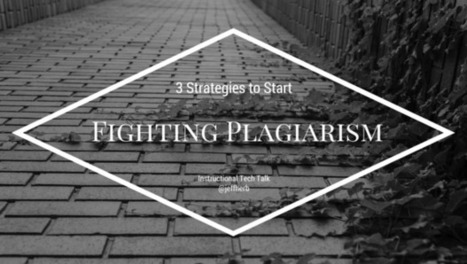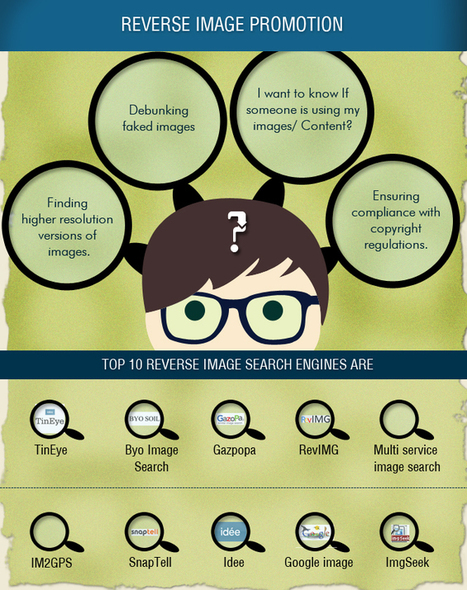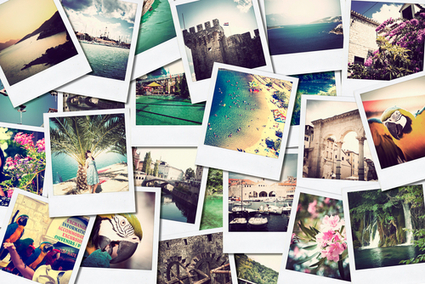 Your new post is loading...
 Your new post is loading...
What does it look like to prepare students to navigate the digital world? This is a question I often tackle in both in my own moments of brainstorming and searching for new resources to share, as well as in conversations with fellow educators. Finding the right resources for teaching students the basics of copyright— including its limitations such as fair use—is essential. We want to make sure students are prepared to work and create in digital and traditional spaces, too. Both the ISTE Standards and the American Association of School Librarians Standards for the 21st Century Learner address the issues of preparing students to navigate and create in a digital world. Although we know this is important, tackling the idea of copyright and fair use can sure feel intimidating. That’s why I’m so excited to share the Copyright & Creativity for Ethical Digital Citizens curricula for elementary, middle, and high school students.
Want to use an image you found online? Here’s how to verify its original source, confirm whether you’re allowed to use it, the terms involved in doing so.
Via THE OFFICIAL ANDREASCY
When following the links/categories contained in this search facility, the media available to you has been asserted by third parties to be either in the public domain, licensed under Creative Commons or GNL licence. When copying or making further use of any copyright protected media, you are responsible for ensuring that you do so according to the licence terms attached to the particular work/image. Please ensure that you understand and adhere to all terms and conditions of the licence for any media that you use. Where any doubt exists, contact the copyright holder for clarification.
The Copyright Decision Tool helps teachers decide whether they can use print materials, artistic works or audiovisual materials without getting copyright permission.
Teachers! Thinking of using a copyright-protected work? Find out if you have permission.
Via Nik Peachey
Whether you are building a website, looking for the right photo for your online newspaper or looking for the right sound for your remix, it is important to get permission, and more importantly, the right kind of permission to use media created by others. It does not matter whether you are dealing with a video clip, text, music, photos or computer icons, if you want to make sure your use is lawful, you need to have accessed that material legally.
After discovering a few dodgy lines in a book, I found a PhD thesis full of ‘borrowed’ phrases – yet the cheat has faced no repercussions
There is a major disconnect between student and faculty digital literacy perceptions, and faculty must provide better access to, and knowledge about, digital resources to improve learning outcomes. At least, that's what new findings suggest.
Jane Secker and Chris Morrison are on a mission to make copyright engaging, fun and empowering. Here, they share their experiences of working on the UK Copyright Literacy Survey and their thoughts on the importance of understanding copyright education in the context of digital and information literacy.
Alice Chen writes: "Why do students plagiarize? Most of the time it's probably due to two reasons: they don't know how to properly cite their sources or they don't know what to write.
In my English Language Arts class, my students are constantly writing. It may be blog posts, essays, or speeches. We don't use services like Turnitin so how do I know that they are truly the authors of the work they call their own?
First, my students start and complete most of their writing in class. When given time to write, there is less inclination to cheat."
Via Mary Reilley Clark
Graham Cornish provides answers to ten tricky copyright questions in this blogpost. For further detail and answers to 851 other copyright questions see the newly-released fully up-to-date sixth edition of his classic book, Copyright: Interpreting the law for libraries, archives and information services.
Students often have a difficult time understanding how to tell if they're plagiarizing.
So how can you effectively teach them to tell the difference?
One great project to share with students that can better help them understand how and when they may use images created by others is the Creative Commons project.
|
Checking the papers of your students can take a lot of time.
Depending on the subject and the discipline in question, you may spend hours evaluating the work your class has done. This has always been a typical problem for teachers everywhere, and it might have gotten worse with the advancement of plagiarism. Now you not only have to check papers for their correspondence with your requirements. You need to make sure that the writing is original—otherwise, all your further actions will become worthless.
In this work, we determined, the level of incidence of the use of technologies on academic success and the incidence of interaction and experience on the level of plagiarism of university students. A sample of 10,952 students from 31 face-to-face universities in Ecuador was created. Students were classified based on their experience level, level of interaction with teachers and classmates, and the use they do with technology for academic activities. The results showed that the level of experience does not affect academic success, but does have an incidence on plagiarism levels that increase as this experience increases. Plagiarism reaches higher levels when level of experience, family income and hours of connection per day increases. Academic performance depends on the number of hours that students seek information and the number of academic videos they watch. Also, plagiarism tends to decrease as the student makes better use of technology for their academic activities.
I often ask teachers if they use Google Images for the pictures they use in the resources they make for the classroom.
The majority of teachers tell me they use Google Images for all their images. They simply go to the site, search for their image, grab the best one and use it. I get why people would do this; it’s quick, easy to do and inside the Google search comfort zone. Doing this however is wrong, as seemingly too few of us know.
Plagiarism has reared its ugly head again – this time costing Mic News Director Jared Keller his job in February of this year. Keller was shown the door after gossip site “Gawker” revealed numerous…
One of the most confusing areas of the internet is how it is affected by copyright law. Does copyright law apply to works that are published online? Yes. Will using a copyrighted work that you found…
Plagiarism is a hot topic in the academic world, but it applies in all aspects of our lives. In a country and culture that values intellectual propert
Via Jo Holland, Mark E. Deschaine, PhD
This paper discusses plagiarism origins, and the ethical solutions to prevent it. It also reviews some unethical approaches, which may be used to decrease the p
As a blogger, my main aim is to provide quality content and leads so that I can reach out to as many people as possible. To achieve this goal, for every content we work on, we need to focus on two things: First, it should have good information and could also be interactive and interesting.
Via Fiona Harvey
How do you help students understand, and avoid, plagiarism? Want to know a great way to teach about Plagiarism In The Online Classroom?
Want to know the best stock photo sites to find free images for your e-Learning content? Check out this Top-10 list of the best public domain resources!
Almost 800 business, engineering, education, and health services students completed a fairly typical plagiarism survey. They were asked how strongly they agreed with a statement defining plagiarism as copying text and inserting it in a paper without citing the source. They were asked how often they engaged in this specific behavior. As in many other survey studies, 75 percent of these students agreed or strongly agreed that copying text without referencing it was plagiarism. Eighty-one percent said that the behavior should result in strong punishment, and 84 percent said that they never or rarely engaged in this practice. None of those results are new or particularly surprising.
This list is by no means comprehensive and should you know of a resource that does not appear in our list and you think it should, please contact the Copyright Office and tell us about it!
|



 Your new post is loading...
Your new post is loading...

